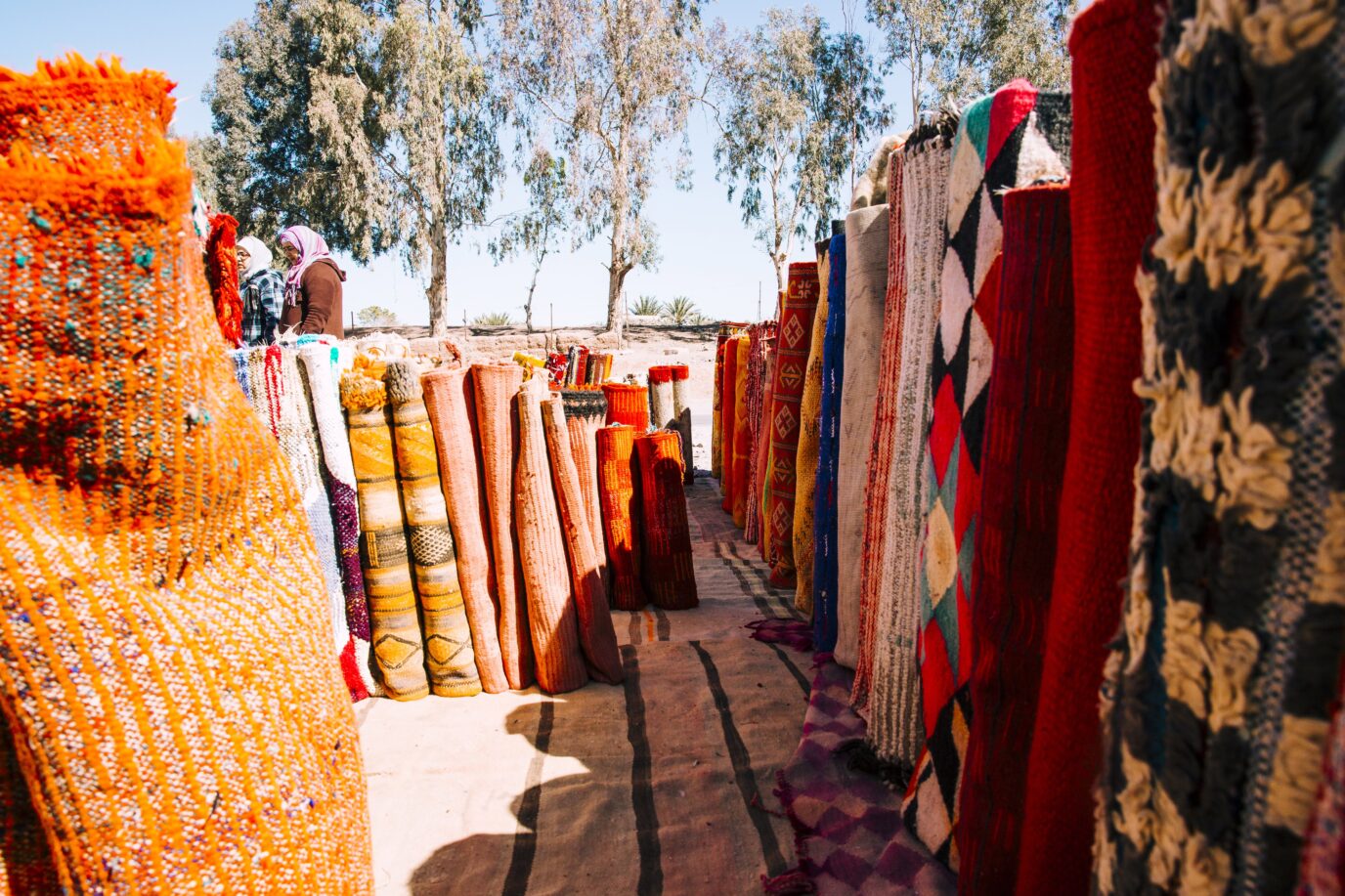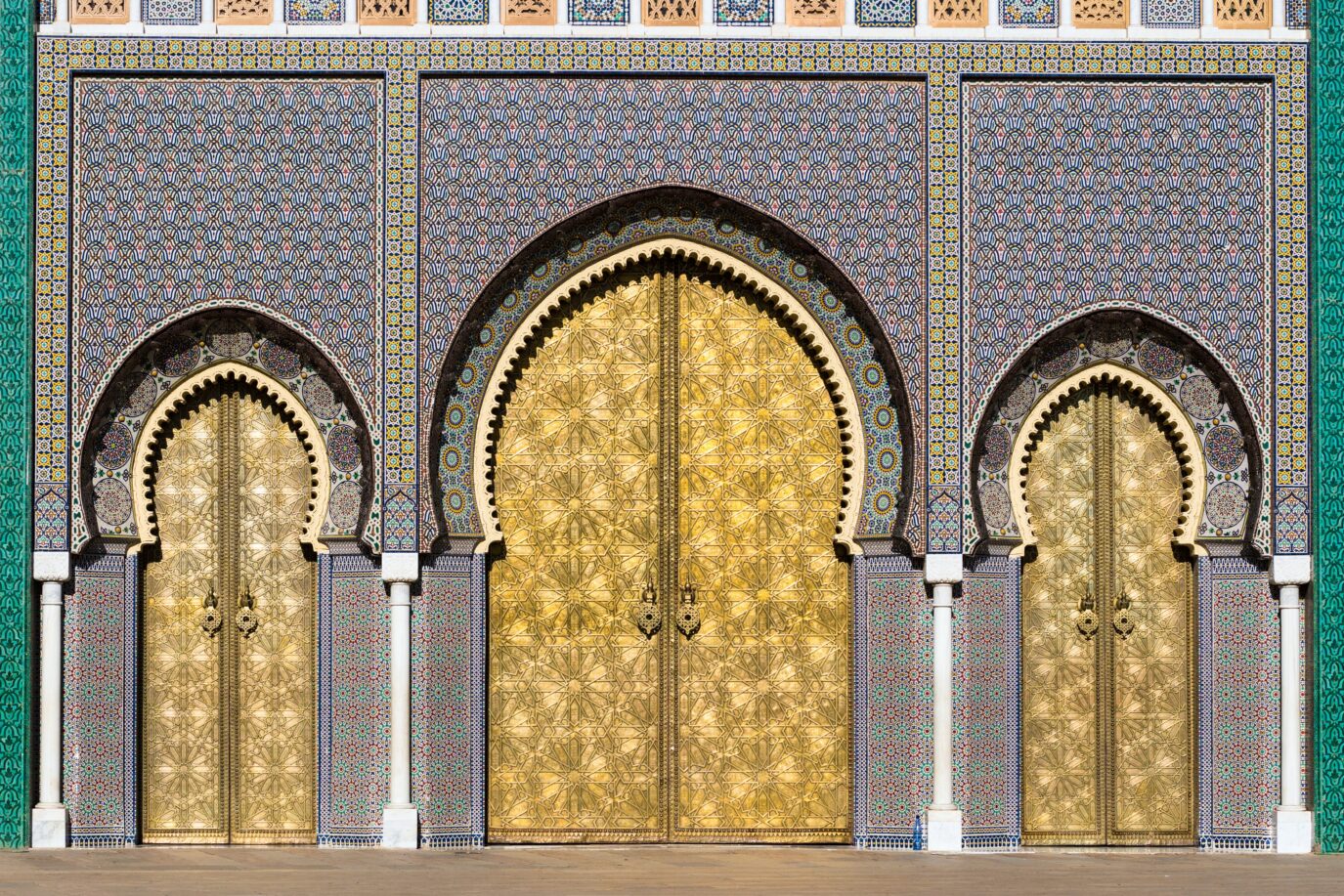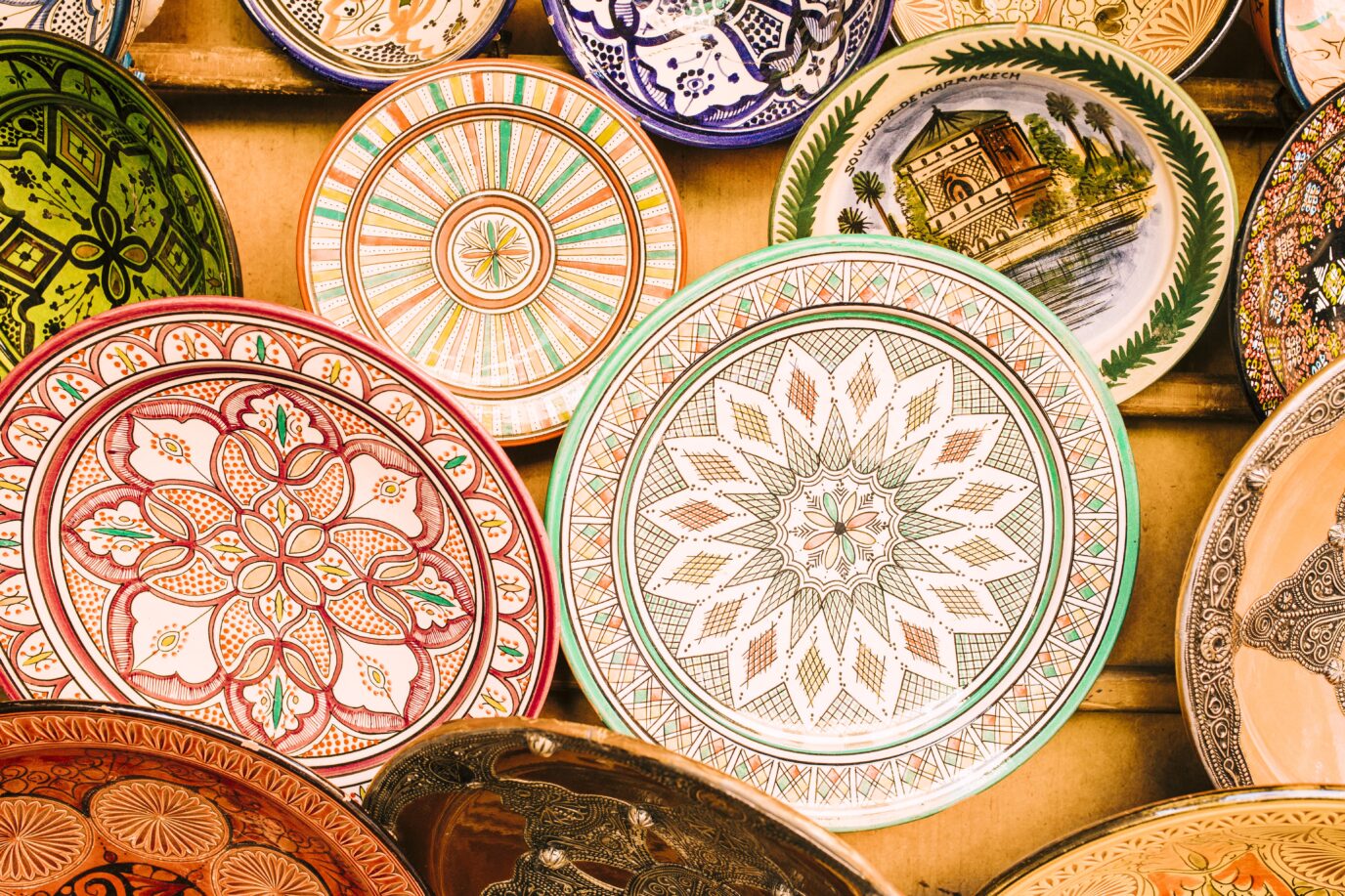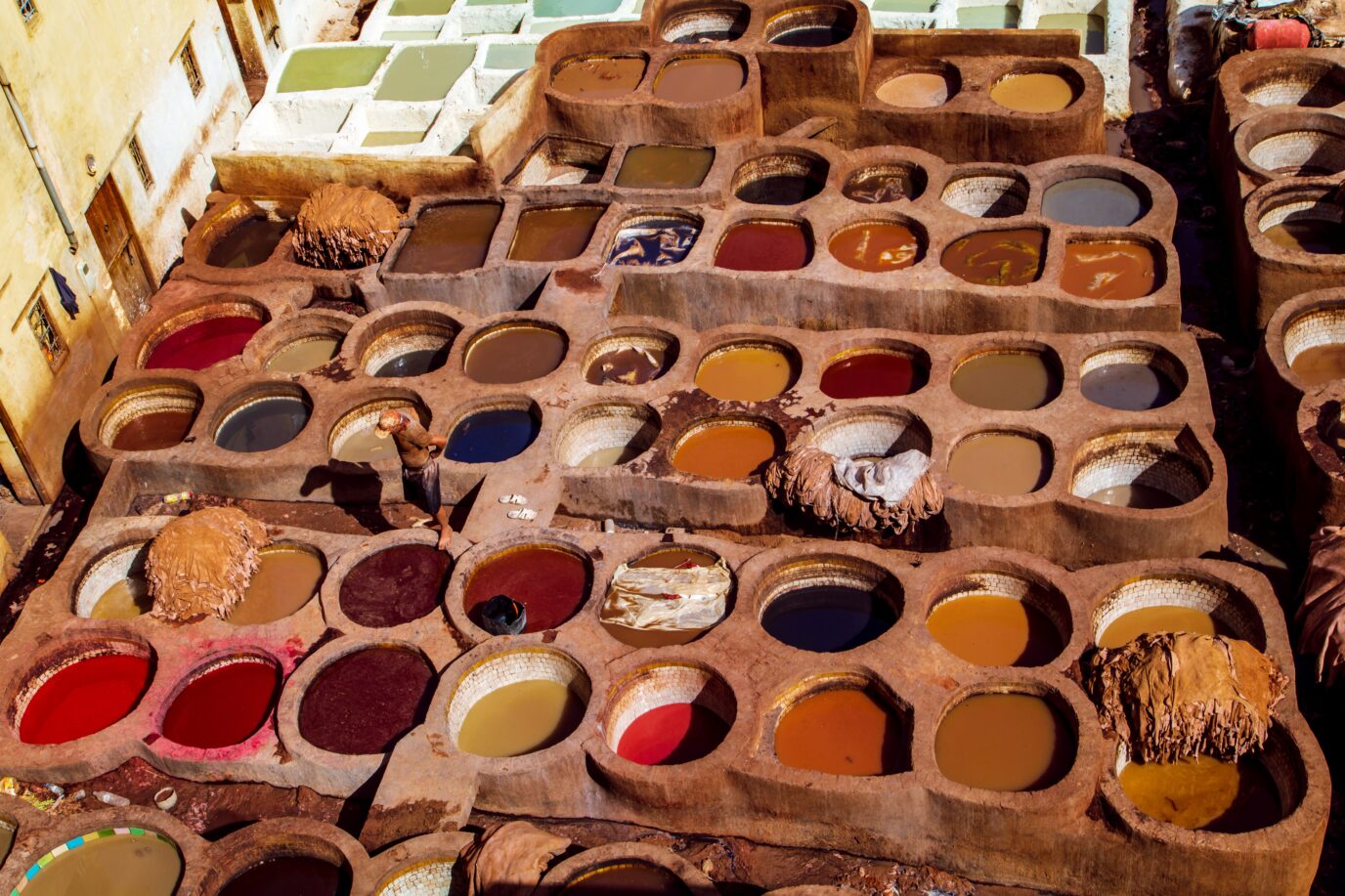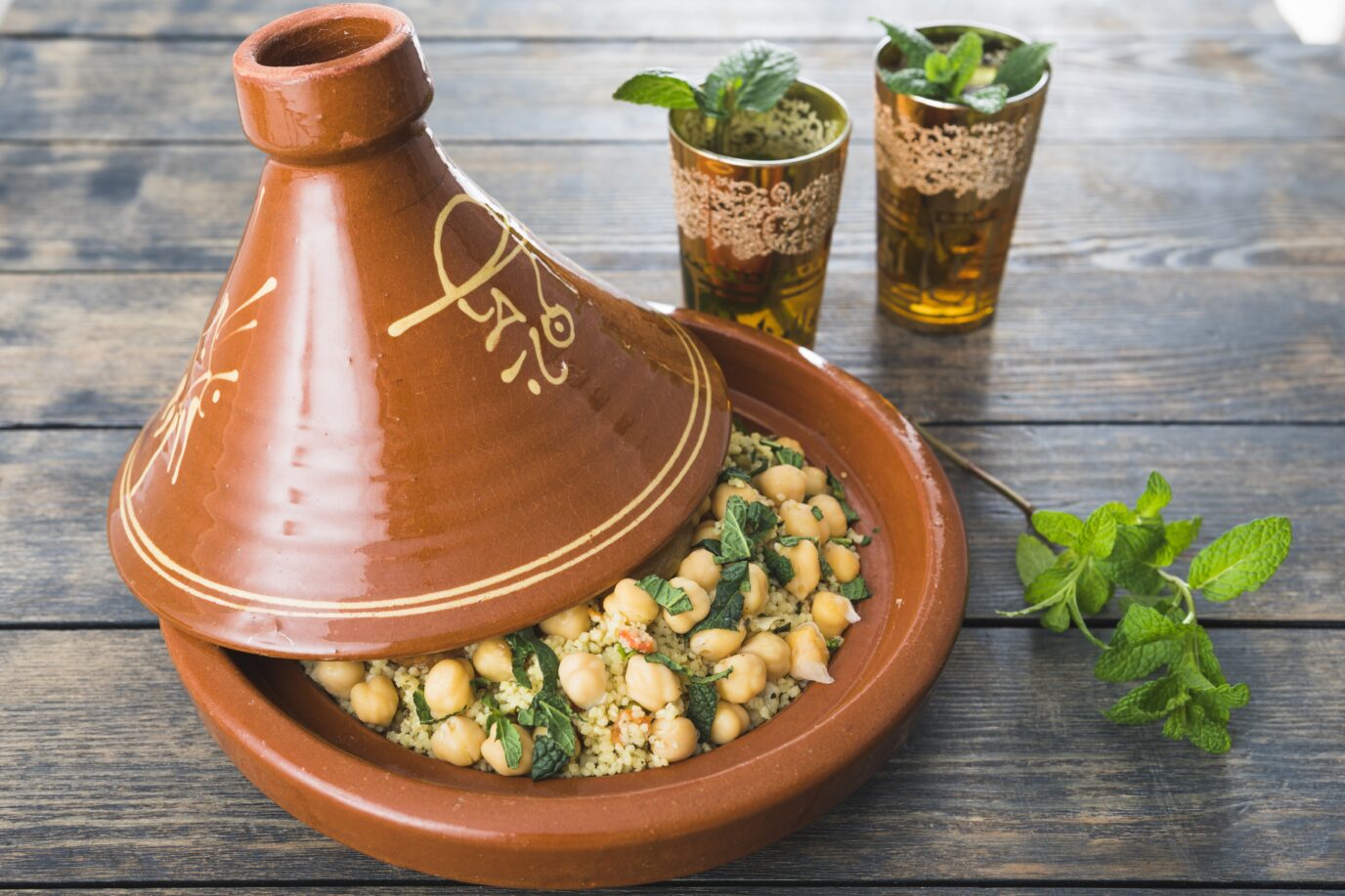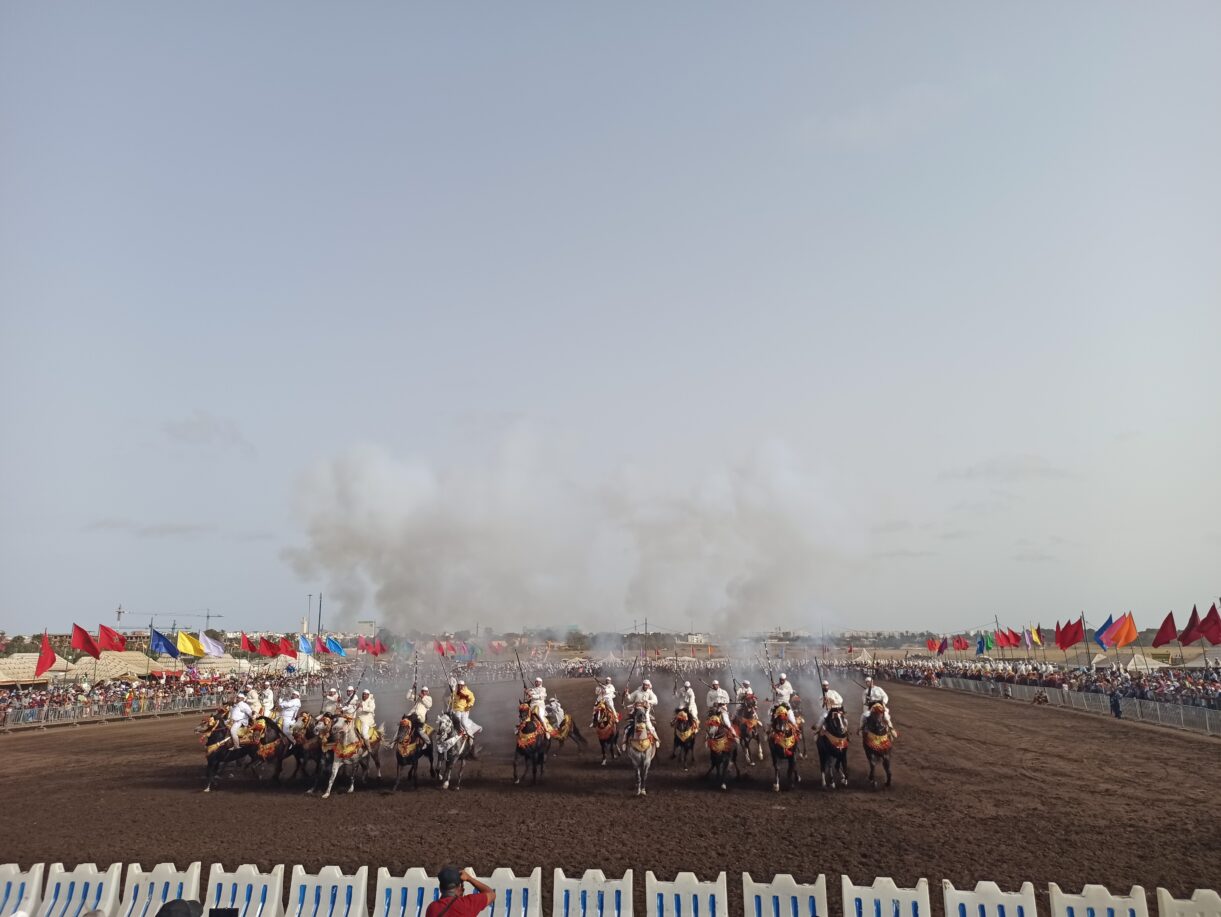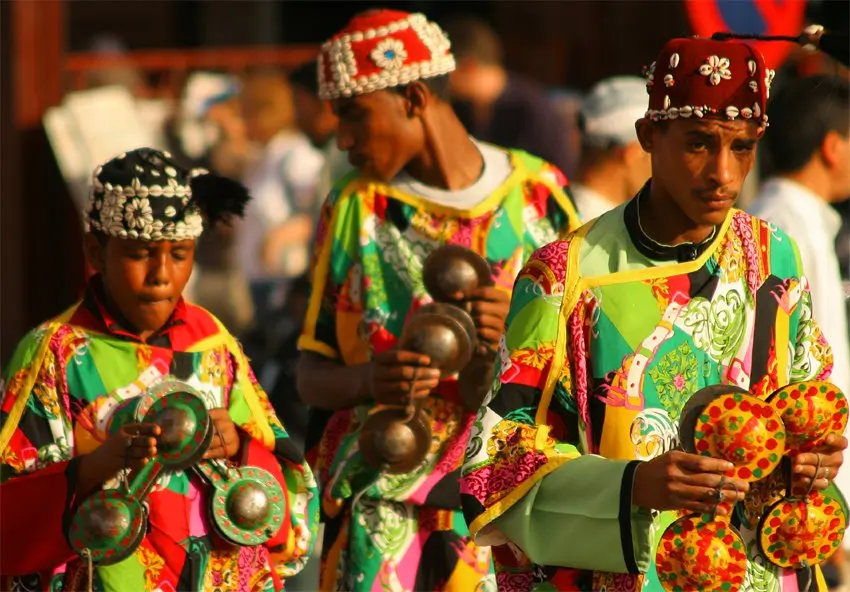The Arts of Morocco is a way of life inherited by instinct, experience, and the spirit of beauty. As soon as you visit this ancient and historical country, you will enter a museum with various arts and local cultures.
Arts of Morocco
fabric
Women in Morocco are famous for their unparalleled skill in weaving carpets. At the same time, men are entrusted with selling them in the traditional markets. Each region of the country is famous for its style. Perhaps the most prominent among them are the Middle Atlas carpets, especially those woven in the Zemmour region (with its red background adorned with a soft hint of orange or yellow), as well as those known in the Taza region (which has a white experience or retains the natural color of the wool), not to mention Saniat Meknes (with colored background). In contrast to the Amazighcarpets, the Rabat carpets are dominated by an oriental tinge, as the red color records its presence remarkably.
the wood
Wood is classified as one of the most prominent ornamental materials and is particularly popular within traditional homes, Riads and palaces. In such spaces, the tall wooden doors decorated with the finest carvings cast their heroism on spacious courtyards, where the ceilings, which, too, are still elegantly decorated with wooden carvings. For reference, the types of wood used in this place vary. We mention, for example, cedarwood, thuja wood, lemon wood, and others. Carved and inlaid thuja wood is often used to make vases, decorative tables, trays, and mashrabiyas.
traditional clothes
The kaftan and the djellaba remarkably furnish the everyday Moroccan traditional clothing wardrobes. It is noteworthy that the demand for wearing it is still high within various circles, especially during religious occasions and weddings, not to mention Ramadan nights. The origin of the caftan, a women’s dress, is attributed to the Ottoman Empire. The kaftan comes in the form of a long dress that reflects the manifestations of grandeur and luxury and is detailed based on luxurious materials (velour, silk, brocade) and studded with precious metal threads, gold or silver. As for the jilbab, which is considered an outer garment, it is popular among both women and men. Thanks to the creativity of Moroccan fashion designers, the caftan and the robe are constantly adding new touches in line with developments in the fashion world.
Porcelain and ceramics
Among the schools that excelled in the pottery industry, three significant schools compete in the pottery industry, the most prominent of which are the Masfio School, the Fasian School, and the Amazigh School. While the Amazigh pottery is characterized by its simple decoration, the ceramics of Fez and Safi are known for their decoration that relies on decorated zellige and colors, which are features that bear the hallmarks of Islamic art.
Skin
The leather industry is a well-established part of the history of Morocco, as evidenced by the origin of the word (maroquinerie). In this regard, three artisanal actors exchange roles for the sake of the leather industry, namely, the tanners, the dyers, and the leather makers. Among the most prominent leather products, we mention but are not limited to leather sofas, bags, wallets, and other accessories. For information, the cities of Fez and Marrakech have been famous for centuries for manufacturing slippers.
cooking arts of Morocco
Mediterranean par excellence, with a Amazigh, Arab and Jewish flavor
Moroccan cuisine is classified among the wealthiest kitchens in the world. The secret of its fame lies in the abundance and diversity of its flavors and colors until it has become, in this field, an essential cultural reference.
Couscous has become a trendy traditional dish. Thanks to its fame, this dish could cross borders and thus find a special place for itself on the tables of the most prominent international restaurants. For reference, the food preparation method differs according to the region and family customs.
In turn, the tagine is classified among the most basic dishes in Moroccan cuisine, if not the most famous of all. As for the origin of its name, it is taken from the pot itself, that ceramic pot painted with a substance that gives it a striking luster and splendor, and in which the cooking process takes place on a quiet fire burning on the embers of wood charcoal. This dish’s ingredients vary greatly, including meat, vegetables, fruits, and spices.
festive occasions
seasons
The word seasons refers to those large gatherings organized annually and furnished with recreational activities that come in processions, folk songs, dances, and tbourida. These occasions, held for meditation and prayer, have always contributed to bringing Moroccans together on rituals, beliefs, and traditions.
For reference, the Tan-Tan Season was classified by UNESCO in 2005 as a masterpiece of humanity’s oral and intangible heritage.
wedding parties
In Morocco, marriage is an occasion during which large festivities are organized that can last from three days to a week. These celebrations are still closely linked to the traditions and customs inherited from the ancestors in the country. The rituals used differ from one region to another, and the clothes, songs, and foods differ according to the customs and culture of the region.
other occasions
In addition to those above, other occasions constitute opportunities for community members to meet during a seasonal event (Almond Festival, Kings Love Festival, candle parade, etc.).
musical art
Music occupies a special place within Moroccan society. Given its incredible diversity, the music reflects the multiplicity of Moroccan cultures. The Moroccan lyrical kashkul includes several musical genres, the most prominent of which are Andalusian, Moroccan, Jewish, chaabi (a kashkul of popular music), Gnawa music, Hassaniya, and others. More recently, Moroccan music has found sources of inspiration in contemporary Arab music that hails from other countries of the Arab world (Egypt, Lebanon, Syria, etc.).
Al-Milhoun: arts of Morocco
Al-Milhoun was born from the womb of the artisans’ assemblies in southern Morocco. With its musical patterns imbued with the Andalusian rhombus, the melhoun is a form of composing poetry whose topics often deal with society’s social and cultural issues. The art of melhoun consists of three parts: composition, memorization, and performance, and the performance of each of these activities is entrusted to a specific teacher.
Gnawa
Gnawa music is considered one of the colors of Sufi spiritual songs that generally draw from religious heritage and evoke the memory of anGnawacestors and spirits. This popular music re-establishes Morocco’s connection with its African roots by consolidating the culture of southern Saharan origins. Gnawa art has gained international fame thanks to the integration of this spiritual music with other foreign musical genres such as blues, jazz, and reggae.
Ahwash
Ahwash refers to those musical chants associated with group dances, whose melodies sing the Amazigh villages of the High Atlas and the Lesser Atlas. This traditional style of music takes the form of dances, in which colorful performances mix with the chanting of the musicians.
Ahidous
Ahidous is a lyrical color that falls within the Amazigh expressive music that plays on the melodies of percussion instruments and is accompanied by a traditional dance in which men and women, side by side, form circles interspersed with rhythmic chants.
Frequently Asked Questions
What is the art of Morocco?
Moroccan art is very different and has much to do with the country’s past. It combines Arab, Amazigh, Andalusian, and European styles. It’s famous for its bright colors, complex geometric shapes, and use of glass, metal, fabric, and wood, among other things. Zellige is a traditional Moroccan tile with very exact geometric shapes used often on walls, floors, and pools. Amazigh women weave Moroccan mats by hand. They are simple but colorful and very popular. Another important art form is Muslim calligraphy, which is often used to decorate mosques, houses, and public places. Moroccans are also very good at working with metal and can make beautiful lamps and serving trays. People love Safi pottery for its bright colors and intricate patterns. The country also makes woven blankets, embroidered textiles, and handmade home decor that show off its rich artistic history. People worldwide love Moroccan art because it is unique, beautiful, and well-made, showing how deeply the country’s culture runs.
What arts are important in Morocco?
Morocco has a long history of art that includes textiles, pottery, zellige, Islamic writing, and metalwork. Mosques and houses are decorated with Islamic calligraphy, which shows spiritual and artistic traditions. Using traditional ways, Amazigh women weave beautiful rugs and shawls with intricate embroidery. People love Moroccan pottery, especially the famous Safi style because it has gorgeous colors and elaborate patterns and often has Arabic writing. Zellige is a traditional mosaic art form that uses exact geometric shapes to decorate floors, walls, and fountains. Moroccan metalworkers make beautiful lanterns, trays, and other artistic items, showing their excellent skills. These different kinds of art are essential to Moroccan culture and continue to fascinate people worldwide.
Where did Moroccan art come from?
Many cultures, like the Amazighs, Phoenicians, Romans, Arabs, and Moors, left their mark on Moroccan art. Each brought their own styles and techniques to the mix. Calligraphy, a type of Islamic art, is very important and can be found in mosques, houses, and public places. The geography and climate of the country have also influenced its art, with bright colors and geometric designs used in textiles and pottery. Because of this mixing of cultures and customs, Morocco has a unique artistic history that shows how diverse and long its history is.
What are the crafts in Morocco?
Moroccan artisans still make carpets, blankets, pottery, metalwork, leather items, and wood carvings by hand, carrying on the country’s long history of fine craftsmanship. Amazigh women are very good at weaving and embroidery, and people love the intricate patterns and bright colors of Safi pottery. Elegant lanterns and boxes are made by skilled metalworkers. Fes is still a center for creating high-quality leather goods. These skills have been passed down from generation to generation and are still an essential part of Morocco’s culture.

